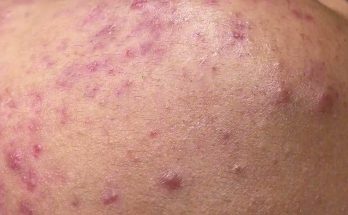
Earwax Removal
The Earigator is an advanced cerumen (earwax) management tool that uses pressure and temperature-controlled water for a pain-free experience.
Cerumen, commonly known as earwax, is a helpful and natural part of the body that cleans, lubricates and protects the ear canal. Cerumen is naturally produced by your ears to prevent dust and dirt from going too far into the ear canal. Cerumen naturally clears itself from the ears, however, sometimes it accumulates and can cause a blockage.

How do you know if you need earwax removal?
You may experience the following symptoms:
- Earache
- Dizziness
- Tinnitus (ringing in the ears)
- Decreased hearing
- Feeling of fullness in the ear
It can be dangerous to try at-home methods such as ear candles, which are ineffective, and cotton swabs, which can push earwax farther into the ear canal or puncture the eardrum.
%20(1).png)
Try our safe at-home ear cleaning method:
Home Remedy for Ear Cleaning
- Mix a 50/50 solution of white vinegar and water (make sure it is at room temperature)
- Use a bulb syringe or medicine dropper
- Gently insert solution into ear
- Allow solution to sit in ear for 20-30 seconds
- Tip head and drain solution into a towel or tissue
If you wear hearing aids, this should be done at night after you are done wearing them for the day. This is safe enough to do every day and will help prevent wax from building up!
The ear canal and eardrum are delicate and earwax removal is most safely done by a professional. It is important to notify your provider of the issue because other conditions may be occurring. Professional treatment may be recommended.
If you are having trouble hearing, it could be earwax. Contact us for an evaluation.
Diagnosis
Your health care provider can see if you have earwax blockage by looking in your ear. Your provider uses a special tool that lights and magnifies your inner ear (otoscope) to look in your ear.
Your health care provider can remove excess wax by using a small, curved tool called a curet or by using suction techniques. Your provider can also flush out the wax using a syringe filled with warm water and saline or diluted hydrogen peroxide. Medicated ear drops may also be recommended to help soften the wax, such as carbamide peroxide (Debrox Earwax Removal Kit, Murine Ear Wax Removal System). Because these drops can irritate the delicate skin of the eardrum and ear canal, use them only as directed.

Earwax removal by a health care provider
When too much wax builds up in the ear, it can be removed by a health care provider using a small, curved tool called a curet.
If earwax buildup continues, you may need to visit your health care provider once or twice a year for regular cleaning. Your health care provider may also recommend that you use earwax-softening agents such as saline, mineral oil or olive oil. This helps loosen the wax so that it can leave the ear more easily.
You can get many ear cleaning home remedies over the counter. But most of these treatments — such as irrigation or ear vacuum kits — aren’t well studied. This means they may not work and may be dangerous.
The safest way to clean your ears if you have excess wax is to see your health care provider. If you’re prone to earwax blockage, your health care provider can show you safe ways to reduce wax buildup at home, such as using ear drops or other earwax-softening agents. People shouldn’t use ear drops if they have an ear infection unless it’s recommended by a health care provider.
Don’t try to dig it out
Never attempt to dig out excessive or hardened earwax with available items, such as a paper clip, a cotton swab or a hairpin. You may push the wax farther into your ear and cause serious damage to the lining of your ear canal or eardrum.
Some people try to remove earwax themselves using a technique called ear candling (ear coning). Ear candling involves lighting one end of a hollow, cone-shaped candle and placing the other unlit end into the ear. The idea is that the heat from the flame will create a vacuum seal that draws wax up and out of the ear.
However, ear candling isn’t a recommended treatment for earwax blockage. Research has found that ear candling doesn’t work. It may also burn or damage the ear.
Essential oils — such as tea tree oil or garlic oil — are also not a proven treatment for earwax blockage. There is no data that shows they are safe for earwax removal, or that they work.
Talk to your health care provider before trying any alternative remedies for removing earwax.
You’re likely to start by seeing your health care provider. In some rare cases, however, you may be referred to a provider with special training in ear disorders (ear, nose and throat specialist).
As you prepare for your appointment, it’s a good idea to write a list of questions. Your health care provider may have questions for you as well, such as:
- How long have you been having symptoms, such as earache or hearing loss?
- Have you had any drainage from your ears?
- Have you had earache, trouble hearing or drainage in the past?
- Do your symptoms happen all the time or only sometimes?


